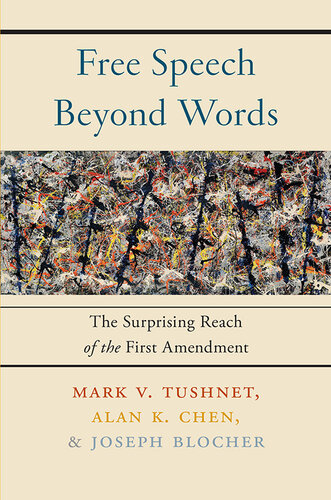
Free Speech Beyond Words
The Surprising Reach of the First Amendment
کتاب های مرتبط
- اطلاعات
- نقد و بررسی
- دیدگاه کاربران
نقد و بررسی

November 14, 2016
Lay readers might not typically consider Jackson Pollock’s paintings, Arnold Schönberg’s music, and Lewis Carroll’s poem “Jabberwocky” to be protected expressions under the First Amendment, but law professors Tushnet, Chen, and Blocher effectively explain why they are considered free speech. They open with a significant paradox: as “nonrepresentational art, instrumental music, and nonsense do not employ language in any traditional sense,” and may not even express “articulable ideas,” how can they be considered speech? Their logical, if not intuitive, answer—“Sometimes things are worth expressing even when they cannot be put into words”—frames their exploration of First Amendment theory and the balancing tests that the Supreme Court has applied in the past. The authors ultimately conclude that both case-law and theoretical approaches to free speech issues offer limited general guidance, and that a case-by-case analysis of future controversies is the best one can hope for. This is a valuable introduction to a field that will become only more significant with the development of new media, such as virtual reality and digital mapping, that could merit First Amendment protection.

December 1, 2016
Tushnet (William Nelson Cromwell Professor of Law, Harvard Univ. Law Sch.; Why the Constitution Matters), Alan K. Chen (William M. Beaney Memorial Research Chair, Univ. of Denver Sturm Coll. of Law), and Joseph Blocher (law, Duke Univ. Sch. of Law) here collaborate to explore the unusual applications of the First Amendment. Throughout, the authors examine the protections of free speech and the nature of speech itself, using art and nonsense speech as examples. The first chapter, written by Chen, draws on the work of linguistic and legal philosophers in arguing that instrumental compositions are protected by the First Amendment because they represent ideas and can trigger protest actions. The Supreme Court case of Morse v. Frederick illustrates the concept of nonsense speech--the decision upheld the suspension of a high school student who displayed a banner reading "Bong Hits 4 Jesus" at an off-campus school event. The student argued it was a joke, but the court ruled schools can restrict speech promoting illegal drug use. VERDICT This thoughtful book debates the nature of speech itself. Law students and legal professionals will want to read it, though general readers will want to look elsewhere. Recommended for law and academic libraries.--Becky Kennedy, Atlanta-Fulton P.L.
Copyright 2016 Library Journal, LLC Used with permission.

























دیدگاه کاربران